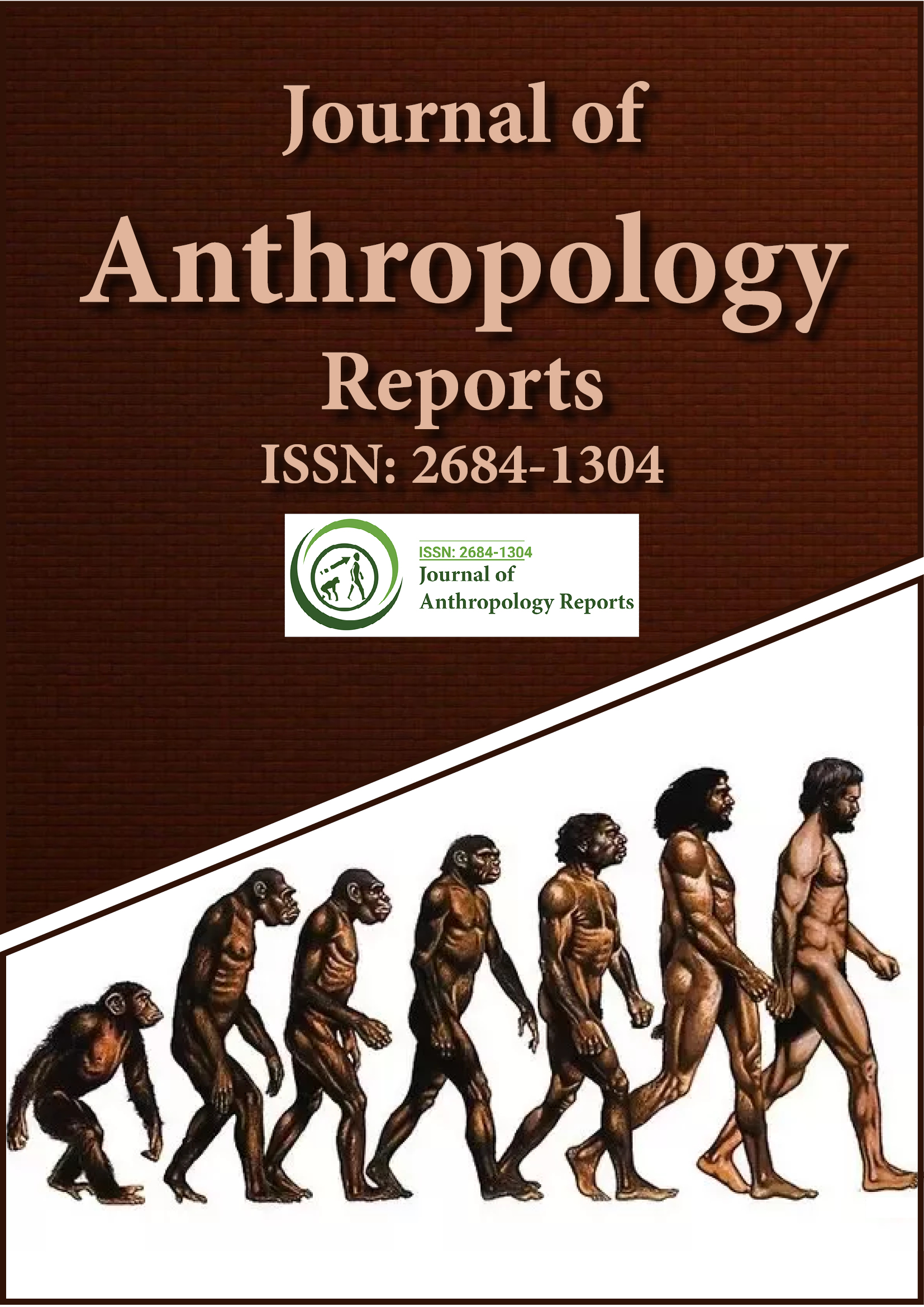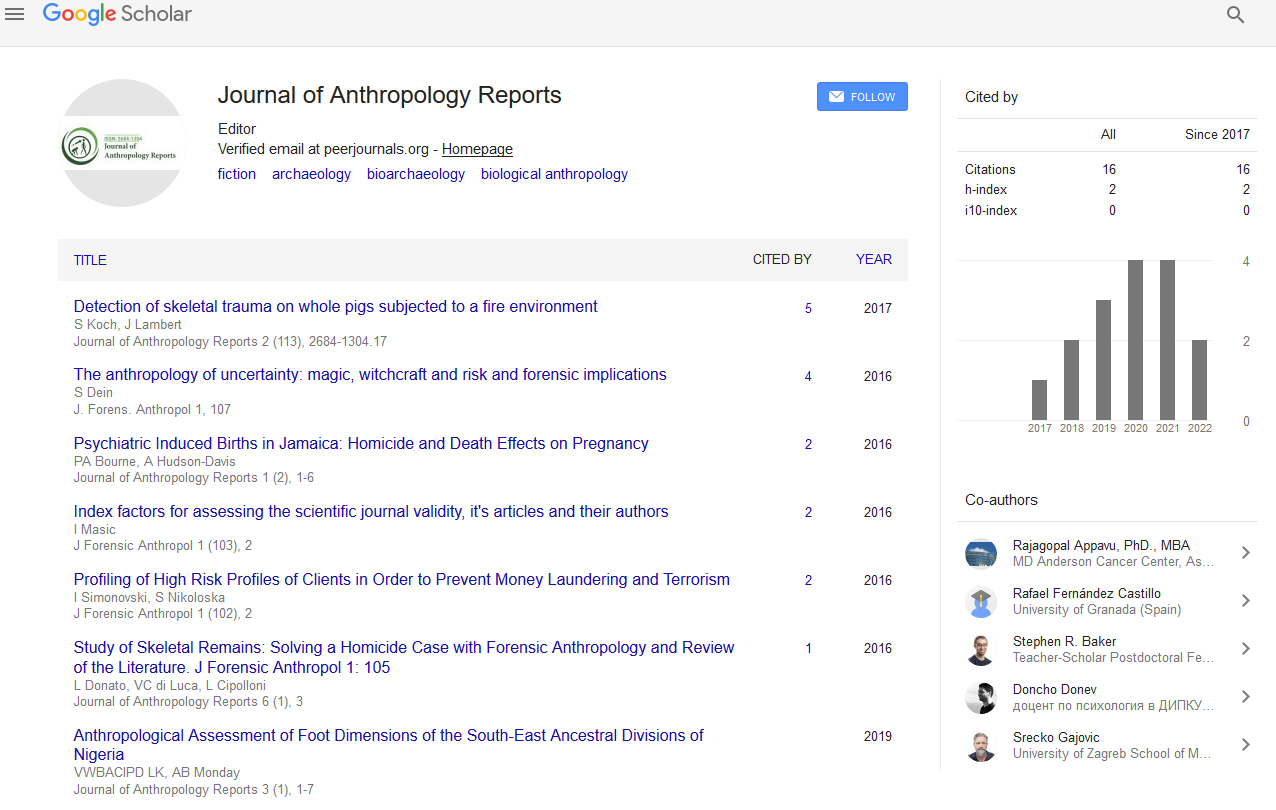Indexed In
- RefSeek
- Hamdard University
- EBSCO A-Z
Useful Links
Share This Page
Journal Flyer

Open Access Journals
- Agri and Aquaculture
- Biochemistry
- Bioinformatics & Systems Biology
- Business & Management
- Chemistry
- Clinical Sciences
- Engineering
- Food & Nutrition
- General Science
- Genetics & Molecular Biology
- Immunology & Microbiology
- Medical Sciences
- Neuroscience & Psychology
- Nursing & Health Care
- Pharmaceutical Sciences
Commentary - (2023) Volume 6, Issue 3
Navigating the Challenges of Automated Craniofacial Analysis
Veigas Oliveira*Received: 04-Sep-2023, Manuscript No. JFA-23-23408; Editor assigned: 06-Sep-2023, Pre QC No. JFA-23-23408 (PQ); Reviewed: 20-Sep-2023, QC No. JFA-23-23408 (QC); Revised: 27-Sep-2023, Manuscript No. JFA-23-23408 (R); Published: 06-Oct-2023, DOI: 10.35248/2684-1304.23.6.168
Description
Craniofacial anthropometry is a branch of anthropology and medicine that focuses on the measurement and analysis of the human skull and face. This field has a long history of contributing to diverse areas such as forensic science, plastic surgery, orthodontics, and anthropology. Traditionally, craniofacial measurements were performed manually by trained experts using calipers and measuring tapes. However, recent advancements in technology have introduced automatic craniofacial anthropometry landmarks detection, revolutionizing the way we analyze craniofacial structures.
The significance of craniofacial anthropometry
Craniofacial anthropometry is essential for understanding human diversity, both in terms of genetics and environmental factors. It provides valuable insights into population genetics, evolution, and health, enabling researchers to study variations in facial morphology across different ethnicities and generations. Additionally, craniofacial anthropometry plays an essential role in forensic identification, helping to establish the identity of unknown individuals by comparing their craniofacial features to databases of known individuals.
The traditional approach vs. automatic landmark detection
Traditionally, craniofacial anthropometry involved manually measuring specific anatomical landmarks on the skull and face. This method was time-consuming and often subject to human error, as precision relied heavily on the expertise of the examiner. Automatic craniofacial anthropometry landmarks detection, on the other hand, leverages cutting-edge technology such as 3D imaging, computer vision, and machine learning algorithms to identify and measure these landmarks with remarkable accuracy and efficiency.
Advantages of automatic craniofacial anthropometry landmarks detection
Precision and accuracy: Automatic landmark detection systems can identify and measure craniofacial landmarks with submillimeter accuracy, reducing human error and ensuring consistency in measurements.
Time efficiency: What used to take hours or even days to perform manually can now be completed in a matter of seconds or minutes, making research and clinical applications more efficient.
Objectivity: Automatic landmark detection eliminates the subjectivity associated with manual measurements, as the algorithms follow predefined criteria and do not introduce bias.
Large-scale studies: Researchers can now conduct large-scale studies involving extensive datasets, enabling a deeper understanding of craniofacial variations among different populations.
Applications of automatic craniofacial anthropometry
Forensic science: Automatic landmark detection has transformed the field of forensic anthropology. It enables quick and accurate identification of individuals by comparing craniofacial features to databases of known individuals, aiding in criminal investigations and disaster victim identification.
Plastic surgery and orthodontics: Surgeons and orthodontists use automatic craniofacial anthropometry to plan and execute precise surgical and orthodontic procedures. This technology helps enhance patient outcomes by ensuring the optimal alignment and symmetry of facial structures.
Anthropology and evolutionary studies: Researchers can use automatic landmark detection to study craniofacial variations across different populations and time periods, shedding light on human evolution, migration patterns, and adaptations to different environments.
Medical diagnosis: Automatic landmark detection plays an essential role in diagnosing craniofacial syndromes and conditions, allowing for early intervention and treatment planning.
Challenges and future directions
While automatic craniofacial anthropometry landmarks detection offers numerous advantages, it also presents some challenges. Data privacy, algorithm bias, and the need for large and diverse datasets are areas that require ongoing attention. Additionally, continuous improvement in algorithm accuracy and robustness is essential to ensure reliable results across various applications.
In the future, we can expect further integration of artificial intelligence and machine learning techniques, as well as advancements in 3D imaging technology. These developments will likely lead to even more precise and efficient automatic craniofacial landmark detection systems, further expanding the potential applications of this technology.
Automatic craniofacial anthropometry landmarks detection has revolutionized the way we study and analyze craniofacial structures. Its precision, efficiency, and objectivity have opened up new possibilities in fields as diverse as forensics, plastic surgery, anthropology, and medical diagnosis. As technology continues to advance, we can anticipate further breakthroughs in craniofacial anthropology, leading to a deeper understanding of human diversity and evolution.
Citation: Oliveira V (2023) Navigating the Challenges of Automated Craniofacial Analysis. J Anthropol Rep. 6:168.
Copyright: © 2023 Oliveira V. This is an open-access article distributed under the terms of the Creative Commons Attribution License, which permits unrestricted use, distribution, and reproduction in any medium, provided the original author and source are credited.

